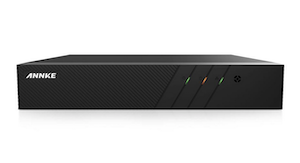Researchers at industrial and IoT cybersecurity firm Nozomi Networks have discovered a critical vulnerability that can be exploited to hack a video surveillance product made by Annke, a Hong Kong-based global provider of home and business security solutions.
The flaw, tracked as CVE-2021-32941 and having a CVSS score of 9.4, has been described as a stack-based buffer overflow that can be exploited by a remote attacker to execute arbitrary code and access sensitive information.
Nozomi said it reported the vulnerability to Annke on July 11 and a patch was delivered via a firmware update on July 22. Annke customers are advised to update their device’s firmware as soon as possible.
 According to an advisory published this week by the U.S. Cybersecurity and Infrastructure Security Agency (CISA), the affected product is used worldwide.
According to an advisory published this week by the U.S. Cybersecurity and Infrastructure Security Agency (CISA), the affected product is used worldwide.
Nozomi researchers discovered the vulnerability in Annke’s N48PBB network video recorder (NVR), which can be used to store video captured by cameras, watch live video streams, and manage cameras.
The vulnerability identified by the researchers can allow an attacker to access recorded videos, delete footage, change configurations (e.g. motion detection alarms), and shut down certain cameras or the NVR to prevent them from recording.
Nozomi has conducted a detailed analysis of the device, which included firmware extraction using a physical connection to its on-board memory. The security hole initially appeared to be a denial of service (DoS) issue, but further analysis revealed that it could be exploited for remote code execution with root privileges, leading to the device getting completely compromised.
Exploitation of the vulnerability requires authentication, but the lack of cross-site request forgery (CSRF) protections could also allow attackers to target a device without being authenticated — they would need to convince a logged-in user, operator or administrator to access a specially crafted web page while being logged in to the NVR’s admin interface.
“Modern video surveillance systems are classified as Internet of Things (IoT) devices, and represent a fundamental component of the physical security of a company,” Nozomi said in a blog post. “As is often the case with IoT, these devices, though apparently simple, suffer from the same cybersecurity risks as more traditional network devices. The well-known Mirai botnet, for instance, targeted IP cameras in the same way routers or printers can be targeted, aiming to compromise them and, subsequently, (ab)use them for large-scale network attacks.”
UPDATE: Annke has provided the following statement:
Customers’ privacy is our top priority. When we noticed the issue, our R&D team investigated the issue immediately, and released the firmware update for the specific NVR at once.
The firmware update is now available on our ANNKE official online store and we have announced the update on our forum.
We understand how important our customers’ privacy is. Our R&D team has done detailed testing to ensure the firmware fixed the issue.
Related: Realtek SDK Vulnerabilities Exploited in Attacks Days After Disclosure
Related: Researcher Finds Over 60 Vulnerabilities in Physical Security Systems
Related: Security Camera Feeds Exposed Due to Flaw in SDK Used by Many Vendors














